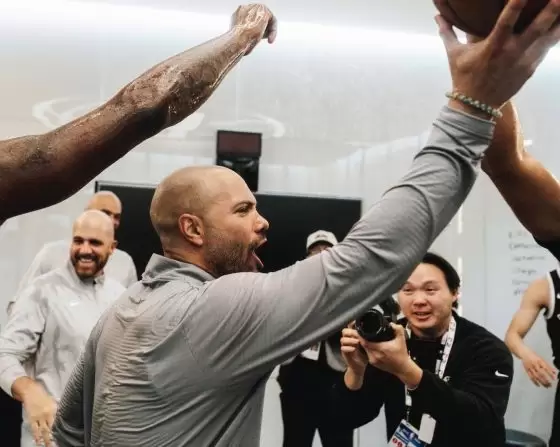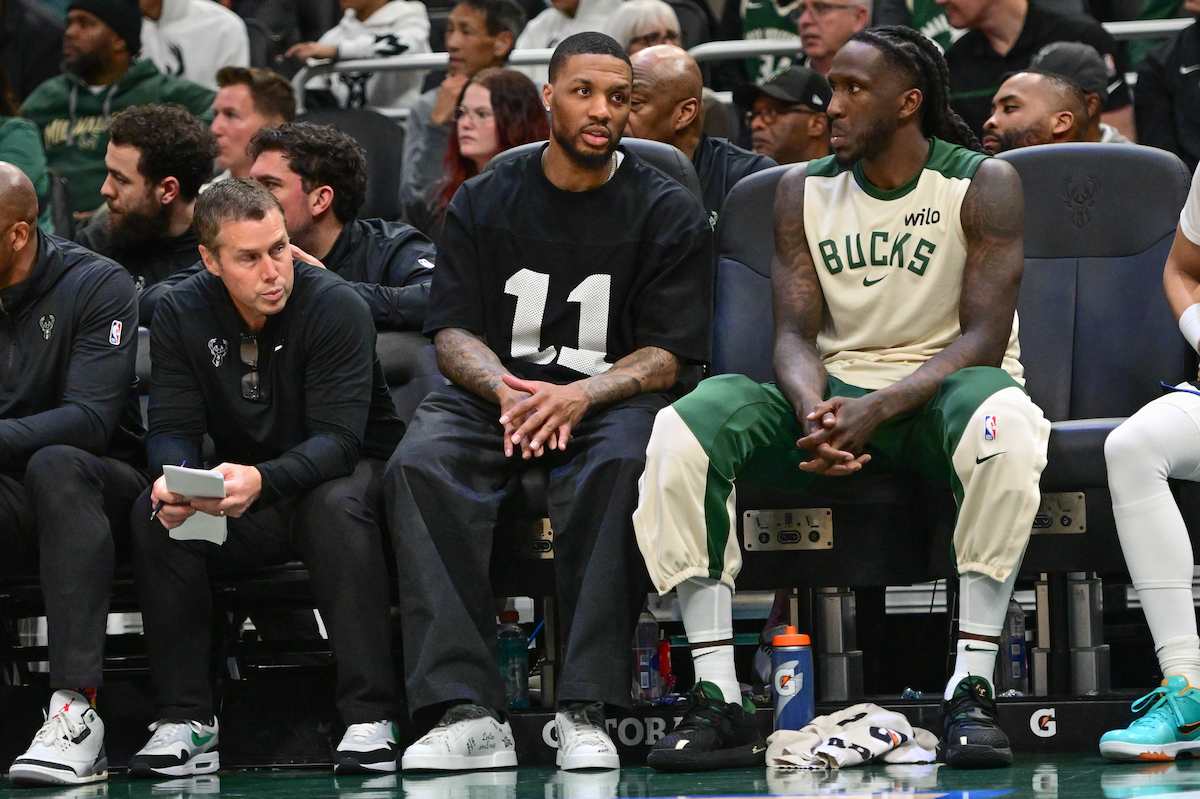Since being named All-Star MVP, Jayson Tatum has been struggling. On Saturday night, when the Boston Celtics faced off against the Utah Jazz, it was clear former Celtics assistant coach Will Hardy had a plan to try and limit Tatum’s effectiveness, and it all began with frustrating him at every opportunity.
Everything Utah looked to do began with sending two defenders Tatum’s way and baiting him to attack the gap before pinching in and pressuring his handle.
Rather than simply pushing into his body with two defenders, the Jazz looked to play both passing lanes while staying in front of Tatum. The result led to Tatum looking to drive the gap between the two defenders, which, if done successfully, would have blown Utah’s perimeter defense wide open and created a scramble to contain the drive.
Instead, it appears as if the Jazz were baiting Tatum to make this decision because as soon as the ball touched the floor, the defenders pinched in, swiped down, and knocked the rock loose, causing a fumbled possession which ended with Tatum forcing a scoop layup without have any control on his speed or body positioning.
Also, take note of the pick-up point a good three or four feet above the three-point line. In pushing the defensive pick-up point higher, the Jazz are allowing themselves some margin for error. If Tatum beats the trap, the help defense has enough time to rotate over and challenge the drive.
We see a similar approach on this possession. Rather than playing the passing lanes, the Jazz look to force a ‘no middle’ policy, with both defenders sliding their feet as Tatum looks to angle his drive toward the restricted area.
The result is another fumbled dribble followed by a bail-out pass to the perimeter, thus giving the Jazz exactly what they were hoping for — a shot that didn’t come from Tatum’s hands and was courtesy of a semi-broken offensive possession.
What’s interesting is that when Tatum is at his best, his reading of double teams and traps is exceptional, and it rarely affects his decision-making process. Still, throughout the contest, Utah kept rattling the cage, looking to see how much they could rock Tatum’s composure and processing speed.
Early in the second quarter, we see the Jazz continue with their defensive strategy against Tatum, but what’s interesting with the above clip is you can see that his having the ball around the logo is the trigger point for their defense to react. As soon as Tatum hits that area of the floor, the trap comes, and Utah trusts their low helpline defense to tag the roll of Luke Kornet, who was operating as a trail man in the action.
Obviously, such an aggressive style of defense won’t work for every team. You need a mixture of size, speed, and length in order to execute consistent traps without giving up a significant advantage time and time again.
Perhaps that’s why Utah changed tactics in the second half of the game. After showing Tatum a string of new bodies, each of them as pesky and amped-up as the last, Utah went to a more zone-centric defensive approach for the final two quarters of the game.
“Collectively, we all keyed in on him,” Ochai Agbaki said. “He was the guy that we couldn’t have let get going in any moment of the game…Talking on defense, Lauri helped me out; we switched to zone for the majority of the second half, so we were just throwing different looks at him.”
In the opening minutes of the second half, the Jazz went to a 1-3-1 zone and immediately found success when limiting a slot drive from Tatum, as the defense swarmed to force another fumbled dribble that ultimately made its way out of bounds. Discouragingly, it took the Celtics a little while to figure out how to penetrate Utah’s zone defense, but Will Hardy would have been expecting that, having been on the team’s staff last season.
Of course, Utah didn’t stick with the 1-3-1 approach for long. Rather, they looked to mix in 2-3, 3-2, and a man/zone look that was based on matchups while allowing helpers to pressure with hard stunts at the ball. By mixing up their approach and throwing bodies at Tatum, the All-Star wing was unable to settle into the game, as he was continually looking for space to attack from.
Sure, there were moments when Tatum broke free or found an open man with a pass, but when you’re facing a star talent, the aim is to contain them, not shut them down. Utah did that.
Here is yet another example of containing Tatum, this time by keeping a body in front of him on the drive, forcing the pass, and then keeping him off the glass to prevent a second-chance opportunity or even a tip-in. By now, Tatum is likely frustrated and ends up giving away a foul as he battles for position on the post, marking his third foul of the game.
In this final example, we can see Tatum recognize the trap and explode into the space on the strong side wing. However, this is where Utah’s defense is unique because despite Tatum beating his two defenders, he still finds himself tasked with finishing through, over, or around the big body of Walker Kessler, one of the elite rim protectors in the NBA.
A rushed hook shot ends up rimming out, and Tatum’s rough shooting night (he’s had a few of those recently) continued.
If you wanted to blame a slight lack of form for Tatum’s performance against Utah, no one would argue with you. The fact of the matter is that since the All-Star break, Tatum has been multiple levels off his best, and had he been playing at the level we saw from him earlier this season, Utah’s plan would likely have imploded within the first 12 minutes of play.
Yet, this isn’t that version of Tatum. Not right now. And while his shot selection is questionable, you can’t take away the work Utah did to frustrate and limit him throughout the contest. Hopefully, a game against a Sacramento Kings team that has no interest in shutting guys down on defense can spark a resurgence in Tatum because right now, his game is so flat conspiracy theorists are using it as a map for their YouTube shows.






